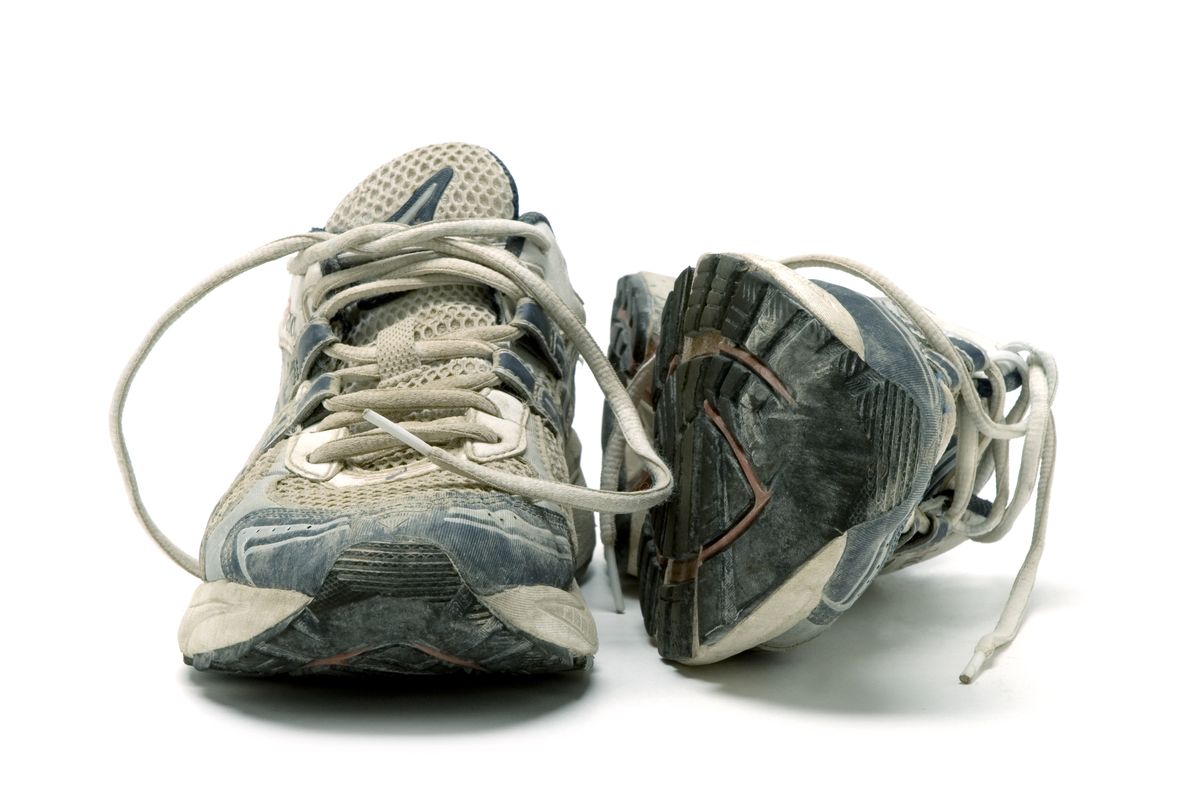Are you a runner or an athlete looking for a reliable and durable pair of shoes? If so, then you’ve probably heard of Hoka shoes. Known for their exceptional cushioning and support, Hoka shoes have gained popularity among athletes of all levels. But how long do these shoes actually last? In this article, we will delve into the lifespan of Hoka shoes, exploring the factors that affect their durability and providing you with valuable insights to help you make an informed decision for your next pair of running shoes.
Thank you for reading this post, don't forget to subscribe!When it comes to the longevity of Hoka shoes, several factors come into play. The first and foremost factor is the specific model of the shoe. Hoka offers a wide range of models, each designed for different types of activities and terrains. Some models are built to withstand the rigors of trail running, while others are more suitable for road running or walking. Understanding the intended use of the shoe and choosing the right model for your needs can significantly impact its lifespan. Additionally, factors such as your weight, running style, and the frequency of use also play a crucial role in determining how long your Hoka shoes will last. So, let’s dive deeper into the world of Hoka shoes and discover the secrets behind their durability.
Hoka shoes typically last between 300-500 miles, depending on various factors such as your running style, terrain, and body weight. Regular runners may need to replace their shoes every 3-6 months, while occasional runners can make them last longer. Proper care, such as avoiding extreme temperatures and wearing them only for running, can also extend their lifespan. Invest in a new pair when you start experiencing discomfort or notice significant wear and tear.

How Long Do Hoka Shoes Last?
When it comes to investing in a good pair of running shoes, durability is a key factor to consider. Hoka shoes are known for their exceptional comfort and support, but how long can you expect them to last? In this article, we will provide you with a step-by-step guide on the lifespan of Hoka shoes and tips on how to prolong their longevity.
1. Quality of Materials
The durability of Hoka shoes largely depends on the quality of materials used in their construction. Hoka utilizes high-quality materials, such as durable rubber outsoles and robust midsole foams, that are designed to withstand the rigors of running. These materials are specifically chosen for their longevity, ensuring that your Hoka shoes will last for a considerable amount of time.
However, it is important to note that the lifespan of your Hoka shoes can also be affected by external factors such as your running style, frequency of use, and the type of terrain you run on. Regularly inspecting your shoes for signs of wear and tear can help you identify any issues early on and take appropriate measures to prolong their lifespan.
2. Proper Care and Maintenance
To maximize the lifespan of your Hoka shoes, it is crucial to take proper care of them. Here are some essential tips on how to care for your Hoka shoes:
a. Cleaning: Regularly clean your Hoka shoes to remove dirt, mud, and debris. Use a soft brush or cloth and mild soap to gently scrub the surface of the shoes. Avoid using harsh chemicals or abrasive materials that may damage the shoe’s exterior.
b. Air Drying: After cleaning, allow your Hoka shoes to air dry naturally. Avoid exposing them to direct sunlight or using heat sources, such as a hairdryer, as this can cause the materials to warp or shrink.
c. Rotating Shoes: Consider rotating between multiple pairs of running shoes. This allows each pair to have sufficient time to rest and recover between runs, reducing the overall wear and tear on any single pair, including your Hoka shoes.
d. Storage: When you’re not using your Hoka shoes, store them in a cool, dry place away from direct sunlight. Avoid placing heavy objects on top of them, as this can deform the shoe’s shape or compress the cushioning materials.
By following these care and maintenance practices, you can significantly extend the lifespan of your Hoka shoes and ensure they continue to provide the support and comfort you expect from this renowned brand.
3. Signs of Wear and Replacement
Even with proper care, all running shoes have a limited lifespan. It’s important to know when it’s time to replace your Hoka shoes to avoid any discomfort or potential injuries. Here are some signs that indicate your Hoka shoes may need to be replaced:
a. Worn Outsole: Check the outsole of your shoes for excessive wear. If the tread pattern is significantly worn down or there are visible signs of damage, it may be time for a new pair.
b. Decreased Cushioning: Over time, the cushioning materials in your Hoka shoes will naturally break down. If you notice a significant decrease in cushioning or discomfort during your runs, it may be a sign that your shoes need to be replaced.
c. Unstable Fit: As shoes age, their structural integrity may deteriorate, leading to a less secure fit. If you notice that your Hoka shoes no longer provide the same level of support or stability, it’s time to consider getting a new pair.
Remember, the lifespan of your Hoka shoes can vary depending on various factors. By taking proper care of them and being mindful of the signs of wear and tear, you can ensure that your Hoka shoes last for a long time, allowing you to enjoy many comfortable and supportive runs.
Frequently Asked Questions
Here are some commonly asked questions about the durability of Hoka shoes.
How long do Hoka shoes typically last?
Hoka shoes are known for their excellent durability, and the lifespan of a pair can vary depending on several factors. On average, a pair of Hoka shoes can last between 300 to 500 miles of running or walking. However, this range can be influenced by factors such as the terrain you run on, your running style, and how well you maintain your shoes.
To ensure longevity, it’s important to take care of your Hoka shoes. Regularly clean them, remove any debris, and allow them to dry naturally. Additionally, rotating between multiple pairs of shoes can help prolong their lifespan, as it gives each pair ample time to decompress and regain their shape between uses.
What signs indicate that it’s time to replace Hoka shoes?
While Hoka shoes are built to last, there are several signs that indicate it’s time to replace them. One clear indication is when you start experiencing discomfort or pain while running or walking in your Hoka shoes. This could be a sign that the cushioning and support of the shoes have worn out, and they no longer provide adequate protection.
Another sign to look out for is visible wear and tear on the outsole or midsole of the shoes. If you notice significant tread wear, loss of cushioning, or any other structural damage, it’s a good indicator that it’s time for a new pair. It’s always better to replace your Hoka shoes before they become completely worn out to avoid any potential injuries.
Can I extend the lifespan of my Hoka shoes?
Yes, you can take steps to extend the lifespan of your Hoka shoes. Proper maintenance is key. Clean your shoes regularly, especially after running on muddy or dirty terrains. Use a gentle brush or cloth to remove any dirt or debris. Avoid machine washing or drying, as this can damage the shoes.
Additionally, it’s important to give your shoes ample time to decompress and regain their shape between uses. Rotating between multiple pairs of shoes can help achieve this. Store your Hoka shoes in a cool, dry place away from direct sunlight, as excessive heat and humidity can degrade the materials.
Are Hoka shoes suitable for all types of terrain?
Hoka shoes are designed to be versatile and suitable for various terrains. They offer excellent cushioning and support, making them ideal for road running, trail running, and walking. However, it’s important to choose the right Hoka model based on the specific terrain you’ll be running or walking on.
For example, if you primarily run on trails, it’s advisable to choose a Hoka model specifically designed for trail running. These models often have additional features such as aggressive traction and reinforced uppers to provide better stability and protection on uneven surfaces.
What can I do with my old Hoka shoes?
When it’s time to replace your old Hoka shoes, there are several options for disposing of them responsibly. One option is to donate them to a charity or organization that accepts used shoes. Many organizations collect used shoes and distribute them to those in need.
If your shoes are still in decent condition, you can also consider selling them or giving them away to someone who may find them useful. Online marketplaces or local shoe donation programs are good places to start. If your shoes are no longer wearable, you can check if there are any recycling programs in your area that accept athletic shoes.

In conclusion, the durability and longevity of Hoka shoes make them a worthwhile investment for any avid runner or outdoor enthusiast. With their unique design and high-quality materials, Hoka shoes are built to withstand the demands of rigorous activities, providing comfort and support for miles on end. Whether you are training for a marathon or simply enjoying a hike in the wilderness, you can trust that your Hoka shoes will go the distance.
Furthermore, the exceptional reputation of Hoka as a brand speaks volumes about the longevity of their shoes. Athletes and professionals alike have attested to the durability and lasting power of Hoka footwear, making them a trusted choice in the industry. So, if you are looking for a pair of shoes that will not only provide you with the utmost comfort but also stand the test of time, Hoka shoes are a reliable option. Don’t compromise on quality or longevity; choose Hoka and experience the difference for yourself.

